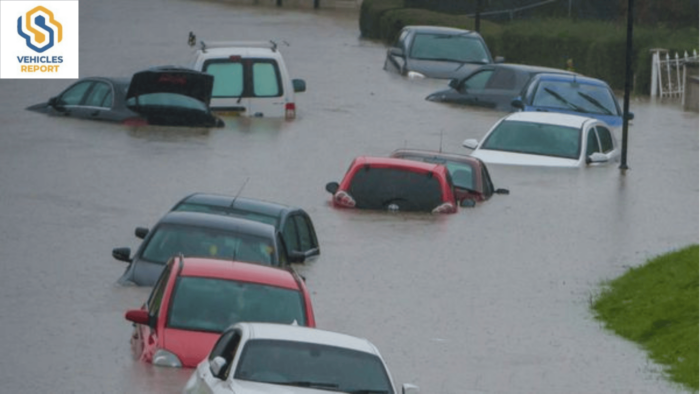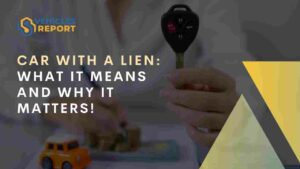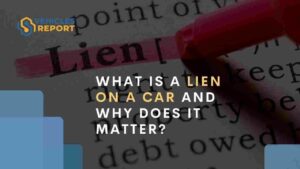You should avoid buying a flood-damaged car by all means!
Many of the damage inflicted on cars by floods cannot be reversed, but they can sometimes be salvaged. About a million vehicles get affected by floods yearly, many of them beyond repair.
However, some will eventually find their way back to dealerships, ready to be sold. You may have to check with your mechanic to realize just how bad water is for the modern car.
Imagine, throwing your TV in the tub and then trying to power it in an hour later. A car can be totally rendered useless considering a lot of electrical parts that can be destroyed by water and contamination.
So thousands of cars are destroyed by floods every year and many of those vehicles don’t end up in a junkyard.
Some are repaired and resold in other parts of the country without the buyer knowing of the car’s flood history. According to Carfax, around 378,000 flooded cars were back on the roads in 2021, and many more damaged cars are expected to be added to the high demand used car market.
For a basic check, NICB offers a free VIN Check service that searches vehicle identification numbers, although it doesn’t use as many data sources as Vehicles Report do.
Of course, running a VIN check to access the vehicle history report is not all-encompassing and don’t guarantee that a vehicle is 100% clean, but they’re valuable in screening potential cars. Ultimately, a detailed inspection by a professional mechanic is a buyer’s best protection.
How to Spot a Flood-Damaged Car
Flood damage can be difficult to detect, but here are some areas to check for some revealing signs.
1. Check the carpets for any signs of waterlogged, such as smelling musty. Another red flag may also be brand new carpets in an older vehicle.
2. Check the seat-mounting screws for any evidence that they were removed. To effectively dry out the carpets, the seats need to be removed and even replaced.
3. Check the lights for any signs of visible waterline on the lens or reflector.
4. Inspect the hard-to-clean areas, such as gaps between panels in the trunk and under the hood, for mud and debris.
5. Check under the bottom edges of brackets or panels, where dirt wouldn’t usually settle.
6. Check the heads of any unpainted, exposed screws under the dashboard. In flooded cars, naked metal will show signs of rust.
7. Inspect the rubber drain plugs under the car and on the bottom of doors to see if they look like they were removed recently so as to drain water.
Some Facts About Flood-damaged Cars
1. If you’re selling a car from an area affected by a flood, even if the car wasn’t damaged, it’s possible that potential buyers might suspect it was. You can sell with confidence by having a mechanic inspect your car before you put it up for sale so that you can have a clean bill of health in place to show as proof to potential buyers.
2. A drowned vehicle is subject to developing all sorts of issues, starting with mold. Water can damage the engine and body panels and other components can rust. The electronic circuits that control everything from power windows to a car’s safety and infotainment system can suffer irregular or complete failures.
3. There are also plenty of scam car sellers who make a living by buying flooded vehicles at very ridiculous prices. The cars are cleaned up, taken outside the state where the VIN is changed and the car is retitled with no trace of being damaged by floods.
Purchasing one of these vehicles might not immediately develop any issues but, with time, the smell of mold could become perceivable, rust might develop, or lights and electrical circuits could start giving you trouble.
4. When buying a used car, exercise careful thoughts even if you don’t live near an area that usually experiences flooding. Be aware that flooded cars are often transported far beyond their original region after major storms to areas where buyers may be less suspicious of the red flags to look for.
Water can ruin a lot of things on a car – the electronics, lubricants, and mechanical systems. It may take months or years, but corrosion can find its way to the car’s vital electronics, including airbag controllers.
You need to carefully inspect any used car before buying one. It starts from pulling up the accurate vehicle history by using an online VIN check service. This will give you access to all the major past records of the car, including if there is any damage caused by flood.
5. When a flood damaged car is declared total loss by an insurance company, the information isn’t usually communicated to potential buyers. Once a car is totaled, it’s meant to get a new title, called a salvage title.
Those titles are usually clearly branded with the word “salvage” or “flood.” In some states, this is indicated on the title as a blur letter or number code. Totaled cars are typically sold at a salvage auction to car rebuilders.
If the flood damage is revealed on the car title, selling the car to a buyer may be legal. A car with salvage title can’t be registered until necessary repairs have been made and the vehicle is inspected again by vehicle agencies.
If it passes inspection, the vehicle is given a rebuilt title, which allows it to be legally registered for use by the buyer.
The golden rule is that you should try and avoid vehicles with signs of deep-water exposure even if the vehicle looks clean and is working when you inspect it.This is because long-run significance of water damage can haunt buyers for the lifetime of the car.








